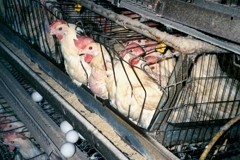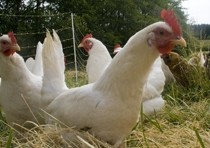New Zealand outlaws battery hen cages

The National Animal Welfare Advisory Committee (NAWAC) developed the new code after reviewing the 2005 code and considering scientific evidence and submissions from the public, said committee chair Dr John Hellström.
The new code contains minimum standards and best practices in animal husbandry, care and handling. It covers the full range of hen husbandry topics, including the provision of food and water, shelter and protection of health. The biggest change in the new code is to require that battery cages can no longer be used.
Around 83% of New Zealand eggs are currently produced by hens housed in battery cages. The country’s caged eggs come from 47 producers, while 3% of eggs are produced in barns and about 14 per cent are from free-range barns.
10-year process
“From now on, battery cages will no longer be allowed to be installed, and existing cages will be progressively removed from use over the next 10 years. Battery cages house three to five hens and restrict hens from expressing a range of normal behaviours,” Hellström said.
“The new code will ensure that hens live in an environment that meets their welfare needs and lets them carry out a range of normal behaviours, such as perching, pecking and scratching.”
Under the code, farmers will only be able to house their hens in colony cages, barns or free-range barns. Colony cages are an acceptable option under the code because they allow hens to display a range of normal behaviours.
“Colony cages are bigger, typically housing 40-60 birds, and include a secluded nesting area, perches and a scratching area.” Hellström said.
Battery cages score low
He added that there are welfare costs and benefits attached to all housing systems for layer hens, and that while battery cages are not favourable behaviour-wise, at the same time they improve hygiene and reduce the incidence and impact of hens attacking each other.
The committee decided on a 10-year transition period to “balance the welfare of layer hens with the practicality and feasibility for farmers to move to other ways of housing their hens, as well as the ongoing affordability of eggs”.
NAWAC considered and ranked the welfare costs and benefits of each major system and scored them according to a range of welfare aspects. It concluded that, with the exception of battery cages, which had a low score, battery cages, barns and free-range barns each had a similar ranking when all aspects of welfare were considered.
The code replaces the existing 2005 code of welfare for layer hens.
Editor's note: Let us know your views on this move by the Kiwi authorities in the comments below.

















